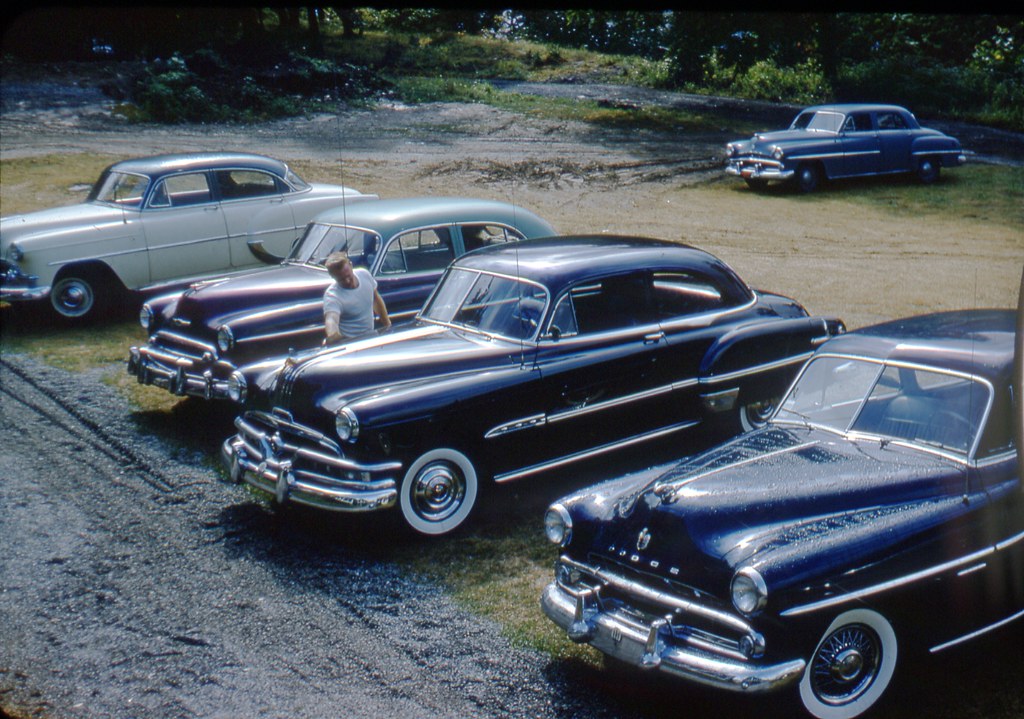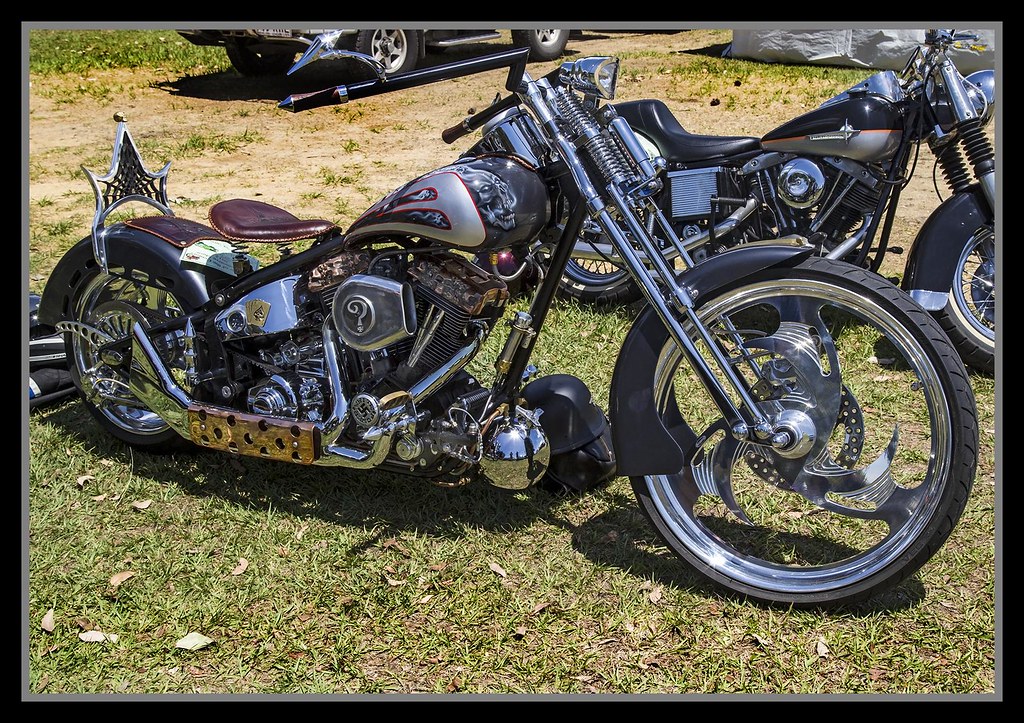
The journey to purchasing a new vehicle is often one filled with excitement and anticipation. Envisioning reliable commutes, memorable road trips, and the simple satisfaction of a smart investment. Yet, the reality for many car owners can quickly diverge from this ideal, transforming initial enthusiasm into a profound sense of buyer’s remorse. After spending tens of thousands of dollars, or committing to a multi-year loan, realizing one has chosen poorly can be a disheartening experience. This phenomenon is, unfortunately, far more common than many might expect, turning what should be a rewarding acquisition into a source of ongoing frustration.
In today’s automotive market, where the price of new and used cars continues to climb, understanding the potential pitfalls before making a purchase is paramount. Relying solely on a vehicle’s exterior appeal or advertised specifications can lead to significant trouble down the road. The true cost of ownership extends far beyond the sticker price, encompassing everything from unexpected repair bills to underwhelming performance and rapid depreciation. By drawing lessons from the experiences of other vehicle owners, prospective buyers can gain invaluable insights, enabling them to make more informed decisions and avoid the common traps that lead to dissatisfaction.
Our objective is to empower you with the knowledge needed to navigate this complex landscape. We delve into specific car models that have garnered a reputation for consistently disappointing their owners, transforming them from sources of pride into vehicles that buyers frequently wish they had never purchased. This detailed analysis aims to illuminate the recurring problems and systemic issues that plague these vehicles, offering a data-driven perspective to help you steer clear of future regrets. What follows is a comprehensive look at some of the vehicles that have caused the most significant buyer’s remorse among American car owners.
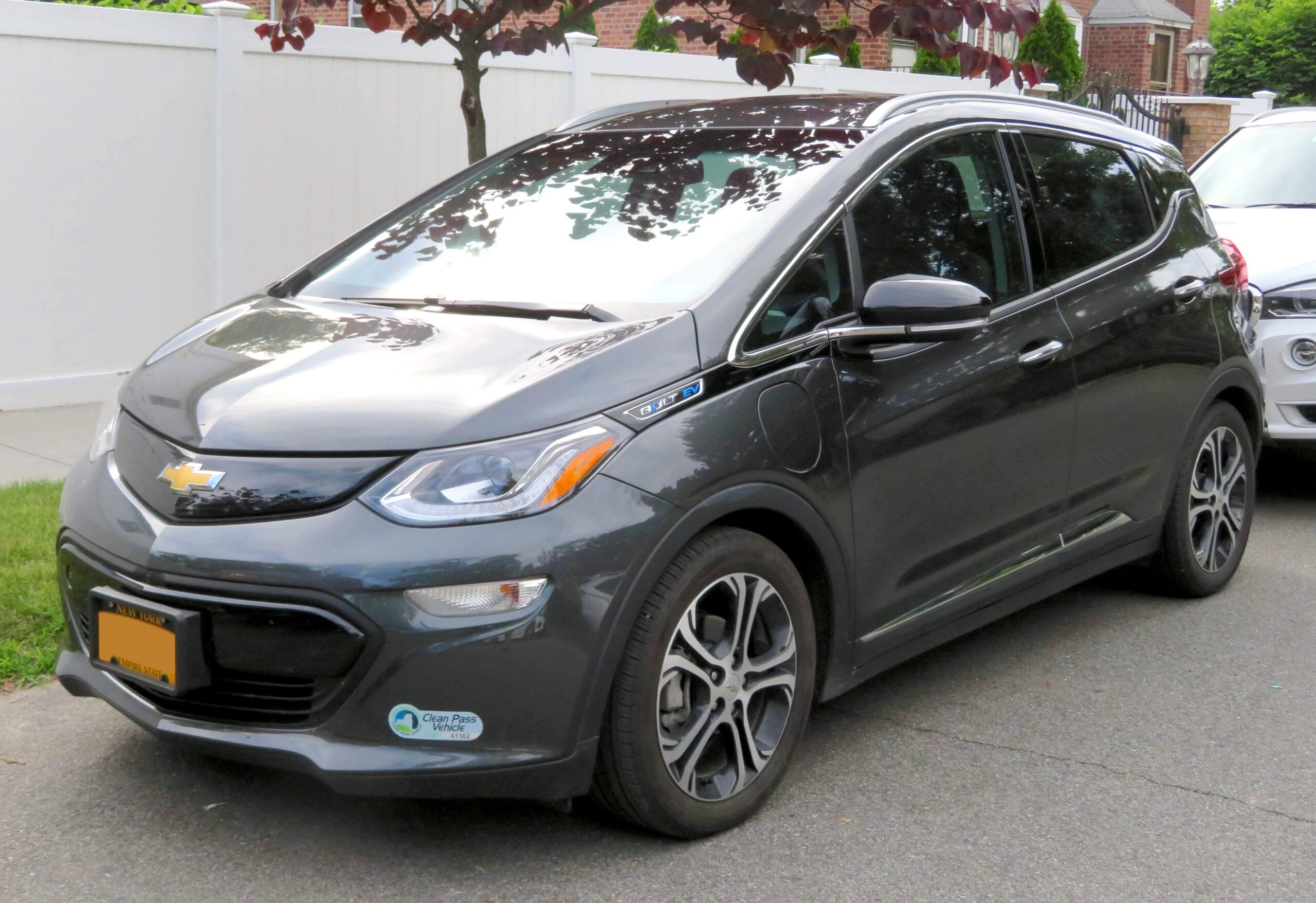
1. **Chevrolet Bolt**The Chevrolet Bolt, an electric vehicle from General Motors, initially entered the market with considerable promise, earning praise for its notable affordability and a respectable driving range. These attributes made it an attractive option for consumers looking to embrace electric mobility without breaking the bank. However, despite its initial appeal and the positive reception for its accessibility, the Bolt has unfortunately been plagued by a series of significant issues that have severely impacted owner satisfaction and its overall reputation in the automotive landscape.
The most infamous and concerning problem associated with the Chevrolet Bolt revolves around its battery system. This issue became a critical point of concern, leading to a massive recall campaign in 2020 and again in 2021. The root of this widespread problem was traced back to the lithium-ion batteries manufactured by LG, which were found to be susceptible to internal defects. These defects could cause the batteries to short-circuit, leading to overheating, and in severe cases, the potential for spontaneous ignition and fires. Such a serious safety hazard understandably generated considerable alarm among owners and regulators alike, casting a long shadow over the vehicle’s reliability.
Beyond the grave battery concerns, the Chevrolet Bolt has also drawn criticism for several other aspects of its driving experience and passenger comfort. Owners and critics have frequently pointed out that the vehicle’s ride quality is merely “so-so,” indicating a lack of the refinement or comfort one might expect from a modern electric car. This suggests that the suspension system may not effectively absorb road imperfections, leading to a less-than-smooth journey for occupants.
Furthermore, the interior ergonomics and passenger accommodations have also received lukewarm reviews. The space allocated for rear passengers is often described as limited, making longer journeys potentially uncomfortable for adults seated in the back. Coupled with a “so-so” assessment of its handling characteristics, the Bolt’s overall driving dynamics and interior liveability fall short of expectations. These combined factors contribute to an ownership experience that, for many, becomes a source of significant regret rather than the anticipated satisfaction of owning an efficient electric vehicle.
Car Model Information: 2022 Chevrolet Bolt EUV FWD LT
Name: Chevrolet Bolt EV
Caption: 2022 Chevrolet Bolt EV
Manufacturer: General Motors
Production: 2016–2023
ModelYears: unbulleted list
Class: Subcompact car
BodyStyle: hatchback
Layout: Front-engine, front-wheel-drive layout
Predecessor: Chevrolet Spark EV
Categories: 2020s cars, All Wikipedia articles in need of updating, All articles containing potentially dated statements, All articles with unsourced statements, Articles containing potentially dated statements from February 2018
Summary: The Chevrolet Bolt EV (marketed in Europe as Opel Ampera-e) is a battery electric subcompact hatchback manufactured and marketed by General Motors under its Chevrolet brand from late 2016 until late 2023, with a brief hiatus between mid-2021 and early 2022.
The first-generation Bolt was developed and manufactured with LG Corporation. Sales of the 2017 Bolt began in California in December 2016; it was released nationwide and international markets release in 2017. A rebadged European variant was marketed as the Opel Ampera-e in mainland Europe. In 2017, the Bolt was the second-best-selling plug-in car in the United States. It was named the 2017 Motor Trend Car of the Year, the 2017 North American Car of the Year, an Automobile magazine 2017 All Star, and was listed in Time magazine’s Best 25 Inventions of 2016. The Ampera-e was discontinued after 2018. By the end of 2020, GM had sold 112,000 Bolt and Ampera-e cars worldwide. The first-generation Bolt had been subject to at least three recalls due to battery fire risks.
In mid-2023, GM officials said they would discontinue the Bolt; after outcry, they announced plans for a next-generation model, which is expected to be revealed in 2025 for model year 2026.
Get more information about: Chevrolet Bolt
Buying a high-performing used car >>>
Brand: Chevrolet Model: Bolt
Price: $21,699 Mileage: 11,106 mi.
Read more about: America’s Iconic Sports Car: Decoding the Most Problematic Corvette Models in History to Help You Buy Smart
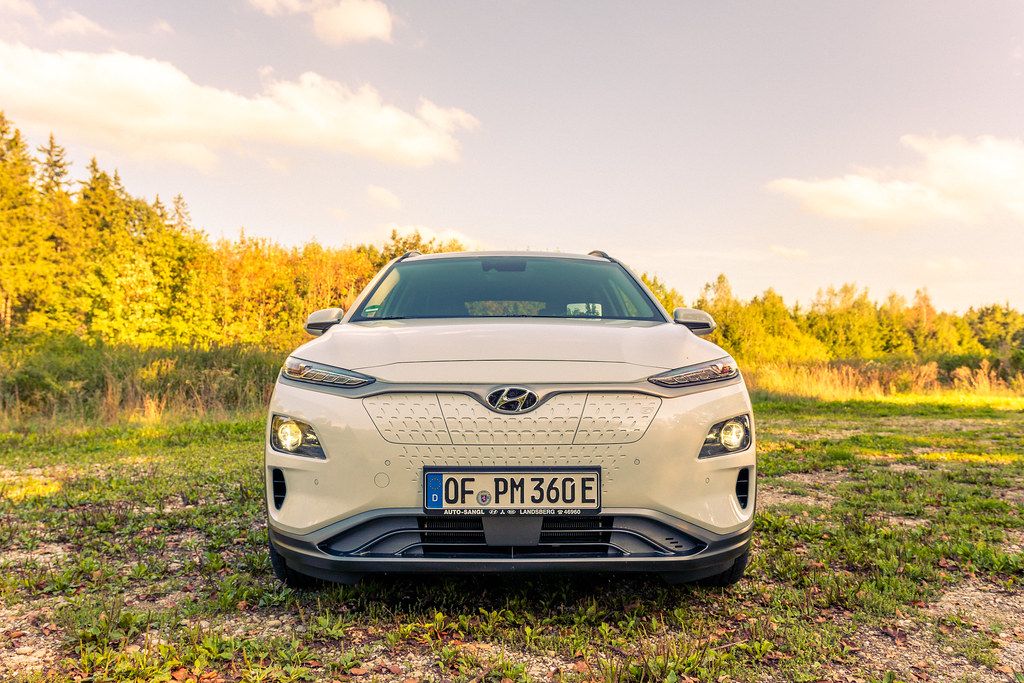
2. **Hyundai Kona Electric**Hyundai has, in recent years, established a strong presence in the electric vehicle market, rolling out several models that have been met with positive reviews and considerable interest. The brand has demonstrated a commitment to innovative design and advanced technology in its EV lineup. However, even successful manufacturers can encounter stumbling blocks, and for Hyundai, the Kona Electric stands out as a particular model that has faced substantial challenges and subsequently caused significant buyer dissatisfaction, tempering the brand’s otherwise strong EV momentum.
Similar to the Chevrolet Bolt, the Hyundai Kona Electric has a troubled history marked by serious battery-related fire risks. This critical issue prompted Hyundai to initiate a worldwide recall in both 2020 and 2021, an extensive effort aimed at mitigating the fire hazards associated with the vehicle. The recall involved replacing battery packs in affected electric vehicles to prevent the potential for overheating and ignition, a direct response to documented cases of battery fires. Such a widespread safety concern not only incurs significant costs for the manufacturer but also severely erodes consumer trust and confidence in the product.
While the battery issues were a primary concern, the context indicates that these problems were merely “the tip of the iceberg” for the Hyundai Kona Electric. This strong phrasing suggests that the vehicle suffered from a broader array of underlying flaws and reliability concerns that extended beyond its power source. Owners often found themselves grappling with an accumulation of issues that made the ownership experience far less desirable than initially advertised. Such a comprehensive set of drawbacks implies that the vehicle struggled with fundamental aspects of its design and engineering.
For prospective buyers, the recurrent issues with the Hyundai Kona Electric serve as a stark warning. The phrase “Buyer beware!” is directly applied, underscoring the potential for ongoing problems and a less-than-satisfactory ownership experience. The combination of serious safety recalls and an unspoken array of additional problems means that this model frequently led to a feeling of regret for those who invested in it. It demonstrates that even within a generally well-regarded EV lineup, certain models can significantly underperform in terms of long-term reliability and owner contentment.
Car Model Information: 2019 Honda Civic EX
Name: Hyundai Kona
Caption: Hyundai Kona N Line (SX2)
Manufacturer: Hyundai Motor Company
Aka: Hyundai Kauai (Portugal)
Production: 2017–present
ModelYears: 2018–present
Class: Subcompact crossover SUV
BodyStyle: SUV
Layout: ubl
Categories: 2020s cars, All-wheel-drive vehicles, All Wikipedia articles in need of updating, All Wikipedia articles written in British English, Articles containing Chinese-language text
Summary: The Hyundai Kona is a subcompact crossover SUV produced by the South Korean manufacturer Hyundai. The first-generation Kona debuted in June 2017 and the production version was revealed later that year. It is positioned between the Venue or Bayon and the Tucson in Hyundai crossover SUV line-up. The battery electric version called the Kona Electric (or Kona EV) was first launched in South Korea during the first half of 2018 and rolled out gradually worldwide afterwards.
Get more information about: Hyundai Kona
Buying a high-performing used car >>>
Brand: Hyundai Model: Kona Electric
Price: $20,497 Mileage: 38,050 mi.
Read more about: Navigating the Electric Highway: What Drivers and Repair Bills Reveal About 15 Problematic EVs for New Owners
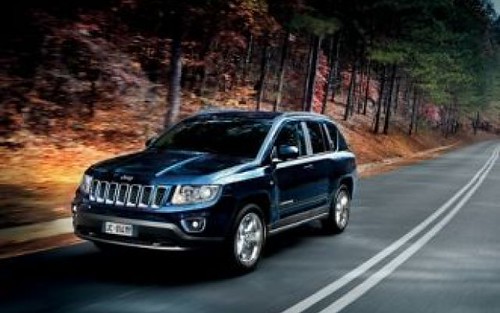
3. **Jeep Compass**The Jeep brand carries a powerful identity, deeply associated with adventure, rugged capability, and an iconic heritage of off-road prowess. For many, the idea of owning a Jeep embodies a spirit of freedom and exploration. However, not all models within the Jeep lineup consistently deliver on this promise, and the compact SUV known as the Jeep Compass has, across various model years, proven to be a notable exception. Despite its brand affiliation, the Compass has unfortunately accumulated a reputation for serious reliability issues and performance shortcomings that have left numerous owners deeply frustrated.
One of the most frequent and severe complaints lodged by owners of the Jeep Compass centers on its transmission systems. Specifically, both the continuously variable transmission (CVT) and the 9-speed automatic transmissions have been sources of significant distress. Owners report experiencing “herky-jerky shifting,” which not only diminishes driving comfort but also raises concerns about the transmission’s longevity and smooth operation. More alarmingly, these transmissions have been known to experience “catastrophic failure,” a critical mechanical breakdown that can render the vehicle inoperable and result in extremely costly repairs. This fundamental flaw undermines the vehicle’s dependability, a core expectation for any modern automobile.
Beyond the pervasive transmission woes, the Jeep Compass exhibits a host of other problems that compound owner dissatisfaction. Reports frequently cite “poor engine performance,” indicating that the vehicle often lacks sufficient power or responsiveness, especially in situations requiring acceleration or sustained effort. This can translate into a sluggish and uninspiring driving experience, particularly when compared to competitors in the compact SUV segment. Additionally, issues such as “excessive oil consumption” point to deeper internal engine problems, necessitating frequent monitoring and replenishment, adding to the burden of ownership.
Electrical system issues further complicate the reliability landscape of the Jeep Compass. Modern vehicles rely heavily on complex electrical architectures, and malfunctions in these systems can lead to a wide array of unpredictable and frustrating problems, from infotainment glitches to critical component failures. Owners also complain about “lackluster performance” overall, alongside “subpar interior quality” which diminishes the daily driving experience, and “mediocre reliability” that falls significantly short of the adventurous spirit the Jeep brand attempts to convey. These cumulative issues contribute to a vehicle that, for many buyers, becomes more of a “migraine headache on wheels” than a dependable companion, leading to profound regret for choosing a model that consistently falls short of its brand’s promise.
Car Model Information: 2020 Jeep Cherokee Latitude Plus
Name: Jeep Compass
Caption: 2019 Jeep Compass
Manufacturer: Jeep
Production: 2006–present
ModelYears: 2007–present
Class: Compact crossover SUV
BodyStyle: SUV
Layout: Front-engine, front-wheel-drive layout
Chassis: Unibody
Categories: 2010s cars, 2020s cars, All-wheel-drive vehicles, All Wikipedia articles written in American English, Articles with short description
Summary: The Jeep Compass is a compact crossover SUV, introduced in 2006 for the 2007 model year. The first generation Compass and Patriot, its rebadged variant, were among Jeep’s first crossover SUVs. The second-generation Compass debuted in September 2016 in Brazil and at the Los Angeles International Auto Show in November 2016, sharing a modified platform with the Renegade. It is positioned between the smaller Renegade and the larger Cherokee globally or the Commander in South America. The third-generation Compass debuted in May 2025, built on the STLA Medium by Stellantis, shared with other PSA Groupe vehicles.
Get more information about: Jeep Compass
Buying a high-performing used car >>>
Brand: Jeep Model: Compass
Price: $15,877 Mileage: 96,780 mi.
Read more about: Why American Pickup Trucks Became Colossal: Unpacking the Complex Web of Regulations, Culture, and Market Forces
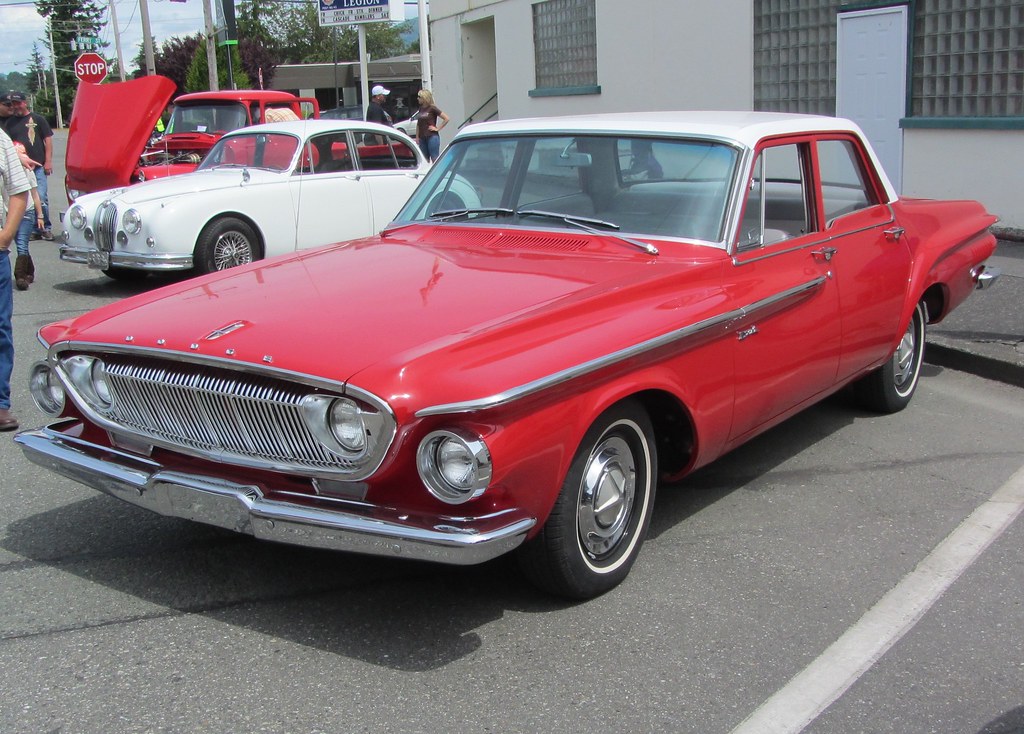
4. **Dodge Dart**The Dodge Dart was positioned as a compact sedan, aiming to offer an accessible entry point into the Dodge lineup. However, its modest size belied a much larger collection of problems, leading many owners to describe it as a “compact sedan with full-size car problems.” This stark contrast between its intended market segment and its actual performance and reliability issues highlights why the Dart has become a prime example of a vehicle many buyers wish they had never purchased. The breadth of its mechanical failures and operational shortcomings spanned across nearly every major system of the car, creating a deeply unsatisfactory ownership experience.
The litany of complaints regarding the Dodge Dart is extensive, encompassing critical components from the powertrain to the vehicle’s structural integrity. Owners reported significant problems with the “transmission,” experiencing issues that compromise smooth gear changes and overall driveability. The “engine” also proved to be a consistent source of trouble, with various performance and reliability issues affecting its long-term viability. Even the “suspension” system, vital for ride comfort and handling, and the “brakes,” essential for safety, were frequently cited as problematic areas, indicating fundamental engineering or manufacturing defects throughout the vehicle’s design.
These pervasive issues translated directly into widespread owner dissatisfaction. According to data cited by Consumer Reports, a significant majority of Dodge Dart buyers expressed regret over their purchase. The report specifically states that “around six in 10 buyers say they are not satisfied with the vehicle.” This high percentage of discontent underscores the severity and prevalence of the Dart’s problems, revealing that a substantial portion of its customer base found the car to be a disappointing investment. Such a high rate of dissatisfaction is a clear indicator that the vehicle failed to meet basic expectations for reliability and performance, regardless of its initial price point or stylistic appeal.
The cumulative effect of transmission, engine, suspension, and brake issues, combined with widespread owner dissatisfaction, painted a clear picture of the Dodge Dart as a problematic vehicle. It became a case study in how a car can appear appealing on the surface but quickly reveal deep-seated flaws that diminish the ownership experience to a point of regret. For consumers seeking a reliable and trouble-free compact sedan, the Dart proved to be an unfortunate misstep, one that many wished they could undo, cementing its place on the list of cars that buyers consistently regret.
Car Model Information: 2015 Dodge Dart SXT
Name: Dodge Dart
Caption: 1966 Dodge Dart GT 2-door hardtop
Manufacturer: Dodge
Production: 1959–1976 (US market)
ModelYears: 1960–1976 (US market)
Class: Full-size
Layout: FR layout
Predecessor: Dodge Coronet#Fourth generation (1957–1959)
Related: Plymouth Valiant,Chrysler Valiant,Dodge Phoenix
Successor: Dodge Aspen,Dodge Diplomat,Talbot Tagora
Categories: 1970s cars, All articles with unsourced statements, Articles with short description, Articles with unsourced statements from December 2023, Articles with unsourced statements from May 2025
Summary: The Dodge Dart is a line of passenger cars produced by Dodge from the 1959 to 1976 model years in North America, with production extended to later years in various other markets.
The production Dodge Dart was introduced as a lower-priced full-size model in 1960 and 1961, but became a mid-size car for one model year for 1962, and was then reduced to a compact for two generations, from 1963 to 1976.
Chrysler had first used ‘Dart’ name plates on two Italian styled show cars, in 1956 and 1957, before it became a Dodge model name. The Dart nameplate was resurrected for a Fiat-derived compact car that was introduced in 2012.
Get more information about: Dodge Dart
Buying a high-performing used car >>>
Brand: Dodge Model: Dart
Price: $9,995 Mileage: 143,082 mi.
Read more about: Behind the Grease and Grime: 12 Cars That Make Mechanics Secretly Cheer (Or Curse) When You Roll In
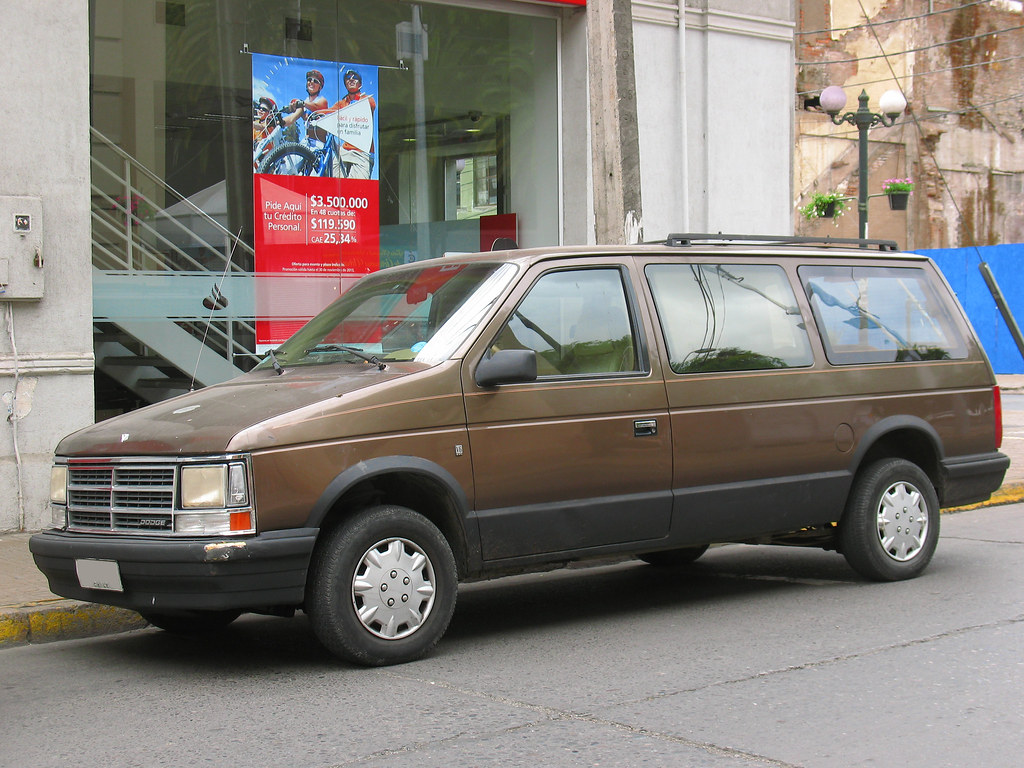
5. **Dodge Grand Caravan**The Dodge Grand Caravan holds a unique place in the memories of many American families, having served as a primary mode of transport for generations. These minivans were often tasked with the demanding roles of hauling families, pets, and countless belongings, creating a backdrop for numerous journeys, some fondly remembered and others less so. Despite its historical ubiquity, the Grand Caravan, particularly certain model years, has been anything but a smooth and reliable driving companion. Its operational shortcomings and frequent mechanical failures have turned what should be a practical family vehicle into a source of considerable stress and expense for owners.
At the forefront of owner complaints for the Dodge Grand Caravan is the pervasive issue of “transmission failure.” This is a particularly devastating problem for a vehicle designed to be a dependable workhorse for families. Before outright failure, many transmissions in these minivans exhibit a range of distressing symptoms, signaling their impending demise. Common complaints include “delayed gear engagement,” where the vehicle hesitates to shift into the correct gear, leading to jerky and unpredictable acceleration. Owners also report experiencing “rough shifting,” making the driving experience uncomfortable and unsettling, as well as the unsettling sensation of “slipping” gears, indicating a loss of power transfer and efficiency.
These transmission woes significantly compromise the Grand Caravan’s ability to fulfill its core function as a reliable family, pet, and cargo hauler. A vehicle that cannot be depended upon for smooth and consistent power delivery becomes a major liability, especially for families who rely on it for daily commutes, school runs, and longer trips. The constant worry about transmission performance adds an unwelcome layer of anxiety to an already significant financial investment, transforming daily driving into a series of uncertain mechanical events. Such a critical flaw fundamentally undermines the trust an owner places in their vehicle.
In addition to the widespread transmission problems, many Dodge Grand Caravan owners have also voiced concerns about “electrical system problems.” Modern vehicles are highly integrated with complex electronics, and malfunctions in these systems can lead to a diverse array of issues, from minor inconveniences like faulty power windows to more serious operational glitches. Another significant complaint is “heavy oil consumption,” which points to potential engine issues and necessitates frequent monitoring and top-offs, adding to both the inconvenience and ongoing cost of ownership. The accumulation of these mechanical and electrical faults leads many owners to a profound conclusion: if they had the chance to “rewind time and have a do-over, they would gladly choose something else,” making the Dodge Grand Caravan a consistently regretted purchase for numerous buyers seeking a dependable family vehicle.
Car Model Information: 2019 Honda Civic EX
Caption: 2011 Dodge Grand Caravan Mainstreet
Name: Dodge Grand Caravan
Manufacturer: Chrysler Corporation,Daimler AG,Chrysler LLC,Chrysler Group LLC,FCA US LLC
Class: Minivan
Layout: FF layout,F4 layout
Production: November 2, 1983 –August 21, 2020
ModelYears: 1984–2020
Related: Plymouth Voyager,Chrysler Town & Country (minivan),Dodge Mini Ram,Chrysler Voyager,Volkswagen Routan
Assembly: Windsor, Ontario,Fenton, Missouri,Fenton, Missouri,Fuzhou
Successor: Dodge Journey,Chrysler Voyager
Categories: All-wheel-drive vehicles, All articles with unsourced statements, Articles with short description, Articles with unsourced statements from December 2017, Articles with unsourced statements from May 2009
Summary: The Dodge Caravan is a series of minivans manufactured by Chrysler from the 1984 through 2020 model years. The Dodge version of the Chrysler minivans, was marketed as both a passenger van and a cargo van (the only version of the model line offered in the latter configuration). For 1987, the model line was joined by the long-wheelbase Dodge Grand Caravan. Produced in five generations across 36 model years, the Dodge Caravan is the second longest-lived Dodge nameplate (exceeded only by the Dodge Charger). Initially marketed as the Dodge counterpart of the Plymouth Voyager, the Caravan was later slotted between the Voyager and the Chrysler Town & Country. Following the demise of Plymouth, the model line became the lowest-price Chrysler minivan, ultimately slotted below the Chrysler Pacifica.
Sold primarily in the United States and Canada, the Dodge Caravan was also marketed in Europe and other international markets under the Chrysler brand (as the Chrysler Voyager or Chrysler Caravan). From 2008 onward, Dodge marketed the model line only as the Grand Caravan; Ram Trucks sold a cargo-only version of the model line as the Ram C/V Tradesman. The model line was also rebranded as the Volkswagen Routan from 2009 through 2014.
After the 2020 model year, the Dodge Grand Caravan was discontinued, ending production on August 21, 2020. For 2021 production, the Grand Caravan nameplate was moved to Chrysler, which used it for a Canadian-market version of the Chrysler Pacifica (in the United States, the exact vehicle was marketed as the Chrysler Voyager).
For its entire production run, the Dodge Caravan/Grand Caravan was manufactured by Chrysler Canada (now Stellantis Canada) at its Windsor Assembly facility (Windsor, Ontario). From 1987 until 2007, the model line was also manufactured by Chrysler at its Saint Louis Assembly facility (Fenton, Missouri). Since their introduction in late 1983, over 14.6 million Chrysler minivans have been sold worldwide (including export versions and versions sold through rebranding).
Get more information about: Dodge Caravan
Buying a high-performing used car >>>
Brand: Dodge Model: Grand Caravan
Price: $20,497 Mileage: 38,050 mi.
Read more about: Unpacking the Wallet Drain: The 12 Most Expensive SUVs to Maintain in Today’s Market for Savvy Long-Term Planners

6. **Nissan Sentra**The Nissan Sentra, a popular choice in the compact sedan segment, has offered reliable model years throughout its history. However, certain iterations have proven to be significant sources of frustration for their owners. Specifically, models manufactured between 2013 and 2019 have earned a reputation for critical mechanical shortcomings that detract severely from the ownership experience, prompting many buyers to express deep regret over their purchase of these particular years.
The most prominent issue plaguing these Sentra models is the continuously variable transmission (CVT). This transmission type, intended to provide smooth and efficient power delivery, instead became a notorious ‘thorn in the side’ of many owners. Reported problems include significant overheating during normal operation, leading to compromised performance and potential damage. Drivers also experienced ‘jerky acceleration,’ where the vehicle struggled to provide consistent power, and unsettling ‘shuddering’ sensations, indicating a fundamental flaw in the transmission’s operation.
Beyond the pervasive CVT concerns, these problematic Sentra model years presented a ‘laundry list of issues’ that further eroded owner confidence. Engine stalling was a frequently reported complaint, posing safety risks and significantly impacting the vehicle’s dependability. Such an unpredictable operational characteristic is unacceptable in any modern vehicle, let alone one relied upon for daily commuting and family transport.
Adding to these mechanical woes, the Nissan Sentra from 2013 to 2019 was also subject to numerous safety recalls. These recalls addressed critical components such as the vehicle’s airbags, seatbelts, and brakes, fundamental systems essential for occupant safety. The accumulation of severe transmission problems, engine issues like stalling, and multiple safety-related recalls paint a clear picture of a vehicle that, despite its initial appeal, consistently underdelivered on reliability and safety, leading to widespread buyer’s remorse.
Car Model Information: 2023 Nissan Sentra SV
Name: Nissan Sentra
Caption: 2021 Nissan Sentra SR (B18; Canada)
Manufacturer: Nissan
Aka: Nissan Sunny
Production: 1982–present
Class: Subcompact car
Predecessor: Nissan Sunny#B310
Categories: 1990s cars, 2000s cars, 2010s cars, 2020s cars, All Wikipedia articles written in American English
Summary: The Nissan Sentra is a series of automobiles manufactured by the Japanese automaker Nissan since 1982. Since 1999, the Sentra has been categorized as a compact car, while previously it occupied the subcompact class. Until 2006, Sentra was a rebadged export version of the Japanese Nissan Sunny, but since the 2013 model year, Sentra is a rebadged export version of the Sylphy. The Sentra nameplate is not used in Japan. Many other countries in Latin America sell their versions of the Sunny as the Sentra. In Mexico, the first three generations of the Sentra were known as the Nissan Tsuru (Japanese for crane), and the B13 model was sold under that name until 2017, alongside the updated models badged as Sentra.
In North America, the Sentra currently serves as Nissan’s compact car, despite being rated as a mid-size car by the EPA due to its interior volume since the 2007 model year. While previous Sentras were subcompacts, the Sentra has grown over the years, with the Nissan Versa having replaced the Sentra in the entry-level area.
The Sentra name was created for Nissan by Ira Bachrach of NameLab, and Bachrach describes the origin as “Nissan wanted consumers to understand that it was quite safe even though it was small. The word Sentra sounds like central as well as sentry, which evokes images of safety.”
Get more information about: Nissan Sentra
Buying a high-performing used car >>>
Brand: Nissan Model: Sentra
Price: $19,498 Mileage: 9,146 mi.
Read more about: Smart Savings on Wheels: Unveiling the 10 Best Value Used Cars for Frugal Shoppers, Backed by Dealer Insights and Long-Term Records
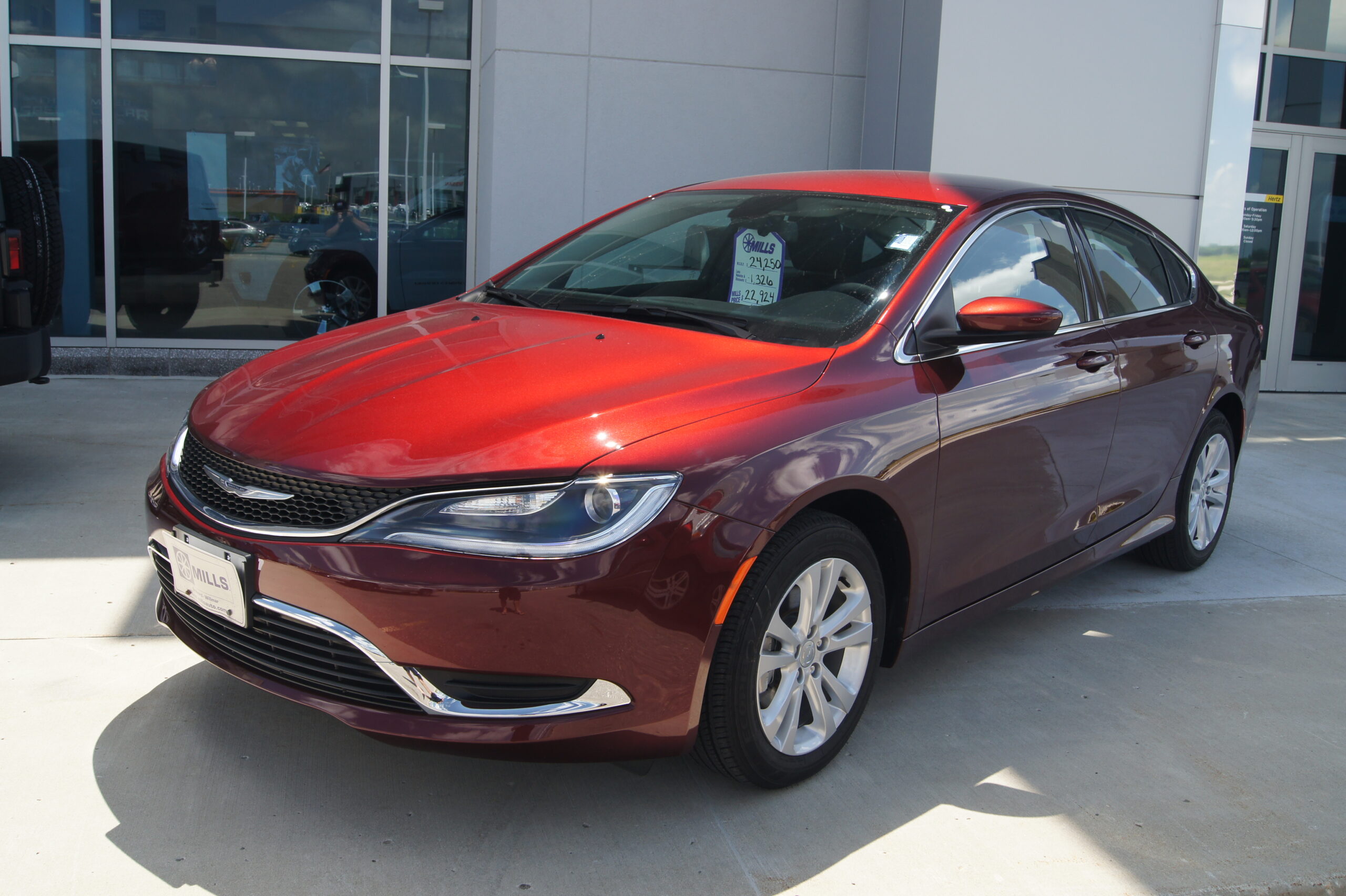
7. **Chrysler 200**The Chrysler 200, produced from 2011 to 2017, was positioned as a stylish mid-size sedan designed to compete with established segment leaders. Despite its aspirations and aesthetic appeal, the vehicle quickly developed a reputation for widespread reliability issues and became a prominent ‘case study in buyer’s regret’ for many consumers. Its operational shortcomings and mechanical vulnerabilities ultimately overshadowed any initial design strengths, leading to profound owner dissatisfaction.
A primary source of distress for Chrysler 200 owners was its transmission system. While reliability issues were pervasive across its manufacturing years, the 9-speed automatic transmission in the 2015, 2016, and 2017 models was found to be ‘especially problematic.’ Owners frequently encountered significant issues that compromised smooth gear changes and overall vehicle performance. These problems often escalated to outright ‘transmission failure,’ a critical and costly breakdown that severely undermined the vehicle’s dependability.
In addition to the extensive transmission woes, the Chrysler 200 also suffered from recurring ‘engine performance problems.’ These issues contributed to an underwhelming driving experience, often characterized by a lack of power, responsiveness, or consistent operation. Such fundamental powertrain flaws are a significant drawback for any vehicle, particularly one aiming for a competitive position in the mid-size sedan market where smooth and reliable performance is a baseline expectation.
Owners frequently reported a driving experience that felt ‘inferior to rivals,’ compounded by observations of ‘lackluster reliability’ overall. The vehicle’s interior quality and ‘cramped rear seats’ further diminished its appeal and practicality. Ultimately, the model was discontinued, leaving many buyers with vehicles that depreciated quickly and were associated with the stigma of being one of Chrysler’s less successful ventures. For those who purchased a Chrysler 200, the combination of mechanical faults and practical shortcomings frequently cemented it as ‘the epitome of a regretted purchase.’
Car Model Information: 2013 Chrysler 200 Touring
Name: Chrysler 200
Manufacturer: Chrysler
Production: 2010–2016
ModelYears: 2011–2017
Assembly: Sterling Heights, Michigan
Class: Mid-size car
Sp: us
Predecessor: Chrysler Sebring
Categories: 2010s cars, All articles with dead external links, All articles with unsourced statements, Articles with dead external links from July 2020, Articles with permanently dead external links
Summary: The Chrysler 200 is a mid-size sedan that was manufactured and marketed by Chrysler from model years 2011 to 2017 across two generations in four-door sedan and two-door convertible (first generation only) body styles.
The 200 nameplate debuted on the 200C, a prototype hybrid vehicle shown at the 2009 North American International Auto Show in Detroit and based on the Chrysler 300. The 200C concept was engineered to accept either traditional gasoline, hybrid or full-electric powertrains.
Get more information about: Chrysler 200
Buying a high-performing used car >>>
Brand: Chrysler Model: 200
Price: $7,995 Mileage: 117,030 mi.
Read more about: Unearthing Hidden Performance: 14 Underrated Sports Cars That Defy Expectations for Today’s Performance Seekers

8. **Nissan Altima**The Nissan Altima, a long-standing contender in the mid-size sedan market, has unfortunately garnered a place among vehicles that owners ‘wish they had never purchased.’ While many associate the Altima with practicality and efficiency, certain model years have presented significant, recurring mechanical problems that have consistently led to deep dissatisfaction and buyer’s remorse, tarnishing the vehicle’s reputation.
At the forefront of these issues is the continuously variable transmission (CVT), which proved to be a ‘problematic transmission’ for many Altima owners. The most severe problems typically emerged in models manufactured between 2013 and 2019. This period saw frequent complaints regarding the CVT’s reliability and performance, with owners experiencing issues that ranged from rough operation to premature failure. Such a critical component’s consistent malfunction profoundly impacts a vehicle’s driveability and long-term value.
Beyond the significant transmission concerns, the Nissan Altima from these problematic years also exhibited other notable mechanical faults. Owners frequently reported issues with the vehicle’s ‘steering,’ indicating potential problems with responsiveness, feel, or alignment that compromised driving control and comfort. These steering complaints point to a wider scope of engineering or manufacturing challenges affecting the vehicle.
Further compounding owner frustration were reports of ‘excessive oil consumption’ and ‘oil leaks.’ These issues suggest deeper engine or sealing problems that necessitate frequent monitoring and costly repairs, increasing the burden of ownership. The combination of a notoriously troublesome CVT, steering concerns, and engine-related oil problems ultimately leads to an ownership experience that falls far short of expectations, making the Nissan Altima a source of regret for many who invested in it.
Car Model Information: 2023 Nissan Altima 2.5 SR
Name: Nissan Altima
Caption: 2024 Nissan Altima SR (L34; US)
Manufacturer: Nissan
Aka: Nissan Bluebird
Production: 1992–present
Class: Compact car
Predecessor: Nissan Bluebird,Nissan Stanza
ModelYears: 1993–present
Categories: 2000s cars, 2010s cars, 2020s cars, All-wheel-drive vehicles, All Wikipedia articles written in American English
Summary: The Nissan Altima is a mid-size car manufactured by Nissan since 1992. It is a continuation of the Nissan Bluebird line, which began in 1955.
The Altima has historically been larger, more powerful, and more luxurious than the Nissan Sentra but less so than the Nissan Maxima. The first through fourth-generation cars were manufactured exclusively in the United States and officially sold in North and South America, along with the Middle East and Australia. For other markets, Nissan sold a related mid-size sedan called the Nissan Teana which was between the Altima and Maxima in terms of size. In 2013, the Teana became a rebadged version of the fifth-generation Altima.
The name “Altima” was originally applied to a top trim line of the Nissan Leopard for the Japanese market in 1986, and then to the Nissan Laurel Altima mid-size car sold in Central America and the Caribbean before 1992. In 1992, Nissan discontinued the Stanza which was a Nissan Bluebird clone, replacing it with the US-built Altima, while remaining a compact car. The first Altima was produced in June 1992, as a 1993 model. All Altima models for the North American market were built in Smyrna, Tennessee, until June 2004, when Nissan’s Canton, Mississippi plant also began producing the model to meet high demand.
Get more information about: Nissan Altima
Buying a high-performing used car >>>
Brand: Nissan Model: Altima
Price: $21,490 Mileage: 45,259 mi.
Read more about: Consumer Reports’ Definitive Guide: Unpacking the Most Reliable Midsize SUVs for 2024 and Beyond
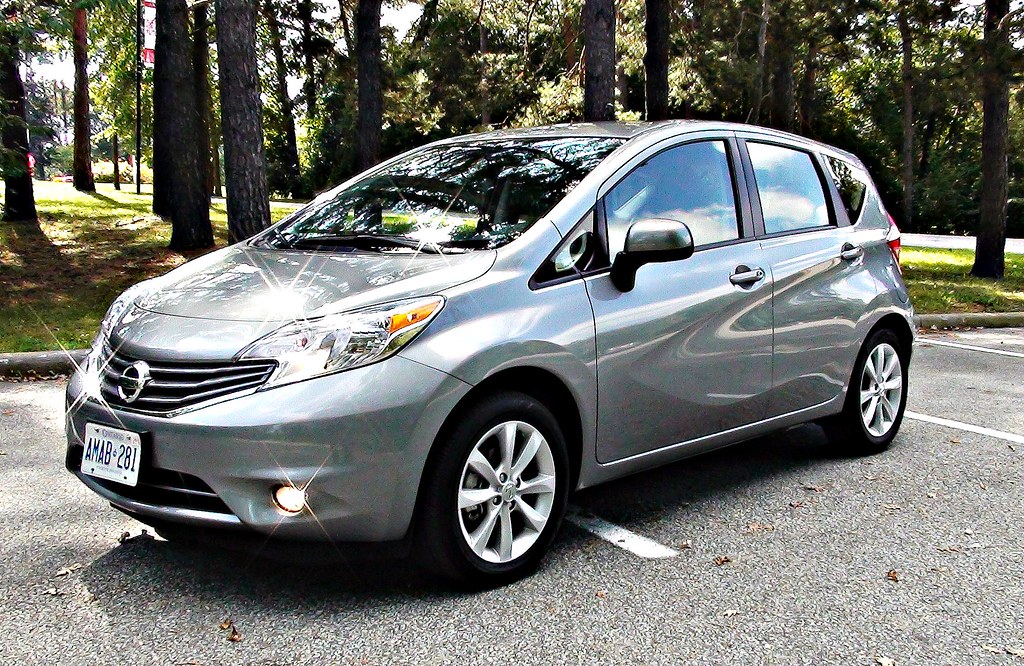
9. **Nissan Versa Note**The Nissan Versa Note entered the market primarily appealing to budget-conscious buyers with its ‘super-cheap small hatchback’ positioning. While an attractive initial price point can be tempting, for many Versa Note owners, that ‘low price mirrors the quality level.’ This model frequently proved that upfront savings could quickly translate into long-term frustrations, leading to significant buyer’s remorse as owners grappled with its fundamental shortcomings.
A central point of contention for Nissan Versa Note owners was its transmission, another application of the continuously variable transmission (CVT). This particular CVT implementation ‘frustrated Nissan Versa Note owners to no end,’ indicating a profound and pervasive dissatisfaction with its performance and reliability. The constant struggle with an underperforming or problematic transmission significantly diminishes the daily driving experience, especially in a vehicle designed for urban commuting.
Complementing the transmission issues was the vehicle’s ‘anemic acceleration from the 1.6-liter 4-cylinder engine.’ This lack of power meant that drivers often found the Versa Note struggled to keep up with traffic, particularly during highway merges or when attempting to accelerate rapidly. The combination of a frustrating transmission and an underpowered engine resulted in a driving experience that felt sluggish and unresponsive, falling short of even modest expectations for modern vehicle performance.
Ultimately, the Nissan Versa Note’s low initial cost could not compensate for its persistent mechanical issues and underwhelming performance characteristics. Owners discovered that the compromises made for affordability often led to daily annoyances and a lack of confidence in their vehicle. This stark reality often transformed initial excitement into profound regret, solidifying the Versa Note’s place on the list of cars buyers wish they had bypassed.
Car Model Information: 2019 Honda Civic EX
Categories: All set index articles, Articles with short description, CS1 Mexican Spanish-language sources (es-mx), CS1 Portuguese-language sources (pt), CS1 Spanish-language sources (es)
Summary: Nissan Versa is an automobile nameplate used by the Japanese manufacturer Nissan in the Americas for the following models:
According to a Nissan press release in 2008, “versa” is short for “versatile space” meant to imply the spaciousness of the interior and configurable cargo arrangements.
Get more information about: Nissan Versa
Buying a high-performing used car >>>
Brand: Nissan Model: Versa Note
Price: $20,497 Mileage: 38,050 mi.
Read more about: Why American Pickup Trucks Became Colossal: Unpacking the Complex Web of Regulations, Culture, and Market Forces
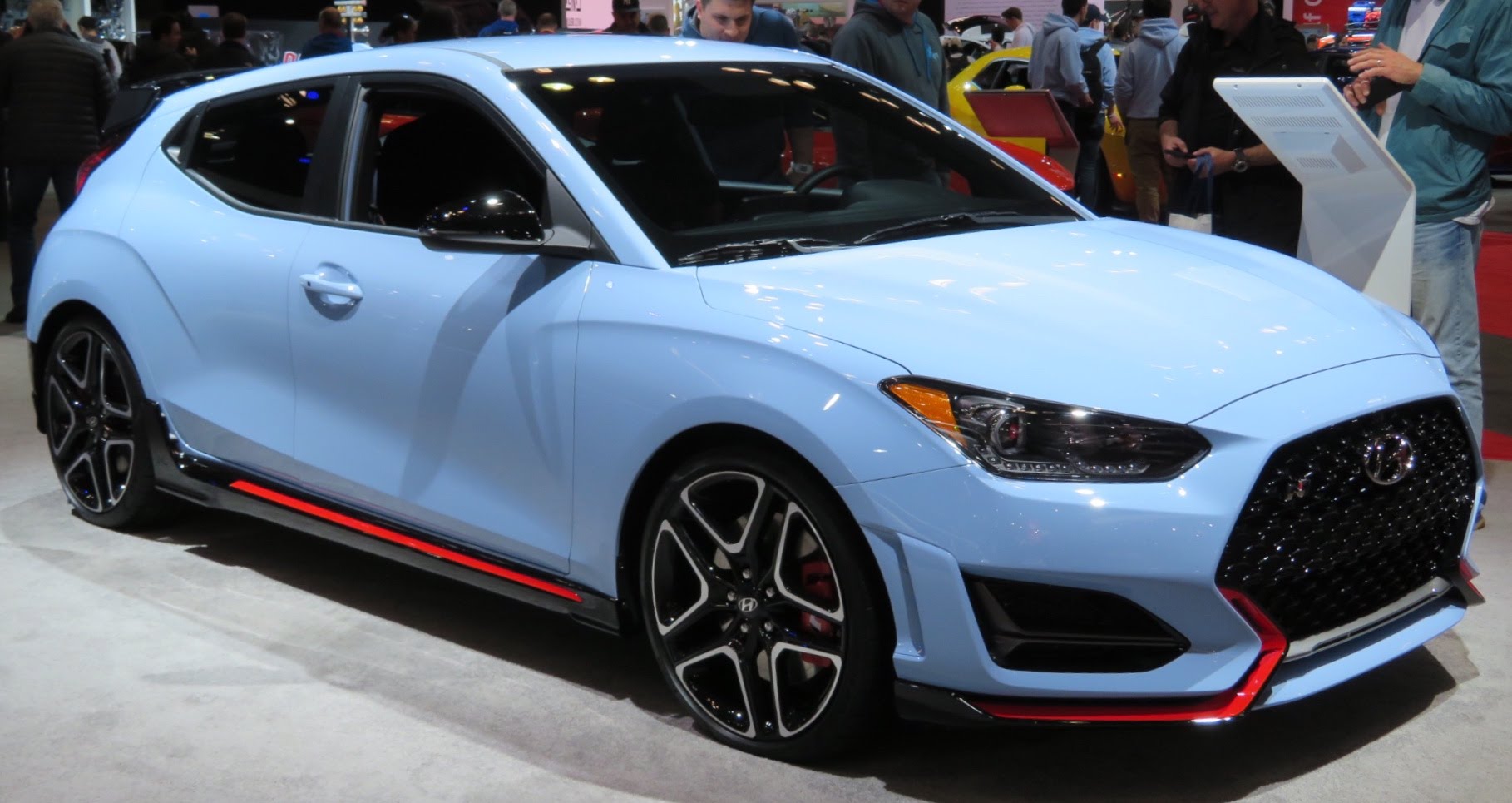
10. **Hyundai Veloster**The Hyundai Veloster initially captured attention with its ‘cool-looking car with distinctive styling,’ unique three-door configuration, and ‘responsive handling.’ These attributes suggested a fun and engaging driving experience. However, beneath its appealing exterior and engaging dynamics, the Veloster concealed a series of significant mechanical problems that proved ‘hard to ignore,’ ultimately leading to considerable buyer dissatisfaction.
A major source of concern for Veloster owners centered on its engine, which exhibited issues severe enough to potentially lead to ‘catastrophic failure.’ Such a critical and devastating problem immediately undermines the vehicle’s reliability and safety, transforming an otherwise enjoyable car into a source of anxiety and potentially immense repair costs. The specter of engine failure is a daunting prospect for any car owner.
Furthermore, the Veloster’s dual-clutch transmission (DCT) was another area rife with problems. Owners reported a range of issues, including ‘delayed acceleration,’ where the vehicle hesitated to respond to throttle input, and ‘slipping’ gears, indicating a loss of efficient power transfer. These were often accompanied by ‘jerky shifts,’ which diminished driving comfort and suggested inconsistencies in the transmission’s operation. These transmission flaws significantly detracted from the vehicle’s sporty promise.
As if the engine and transmission issues weren’t enough, the Hyundai Veloster also suffered from ‘suspension and steering problems.’ These additional mechanical concerns further compromised the vehicle’s ride quality, stability, and handling precision, creating an overall driving experience that fell short of the initial appeal. The cumulative effect of these widespread and serious flaws meant that for many, the Veloster’s initial charm faded quickly, replaced by a profound sense of regret over a purchase that promised excitement but delivered persistent headaches.
Car Model Information: 2012 Hyundai Veloster Base
Name: Hyundai Veloster
Manufacturer: Hyundai Motor Company
Production: 2011–2022
Class: Sport compact car
Layout: Front-engine, front-wheel-drive layout
BodyStyle: hatchback
Predecessor: Hyundai Tiburon
ModelYears: 2012–2022
Assembly: Ulsan
Categories: All Wikipedia articles in need of updating, All articles with unsourced statements, Articles containing Korean-language text, Articles with short description, Articles with unsourced statements from May 2018
Summary: The Hyundai Veloster is a compact car first produced in 2011 by Hyundai, with sales beginning in South Korea on March 10, 2011, and in Canada and the United States since the fall of 2011. In South Korea, it was marketed under Hyundai’s ‘Premium Youth Lab’. It was unveiled on January 10, 2011, at the Detroit Auto Show, and fills the void left when Hyundai discontinued the Hyundai Tiburon after the 2008 model year. The car differs from most other hatchbacks with its asymmetrical door configuration, featuring one large door on the driver side and two smaller doors on the passenger side. This configuration is more common on commercial vehicles and minivans.
Get more information about: Hyundai Veloster
Buying a high-performing used car >>>
Brand: Hyundai Model: Veloster
Price: $7,645 Mileage: 83,462 mi.
Read more about: The $20,000 Mistakes: 10 Sedans Drivers Regretted Buying Before Leaving the Lot
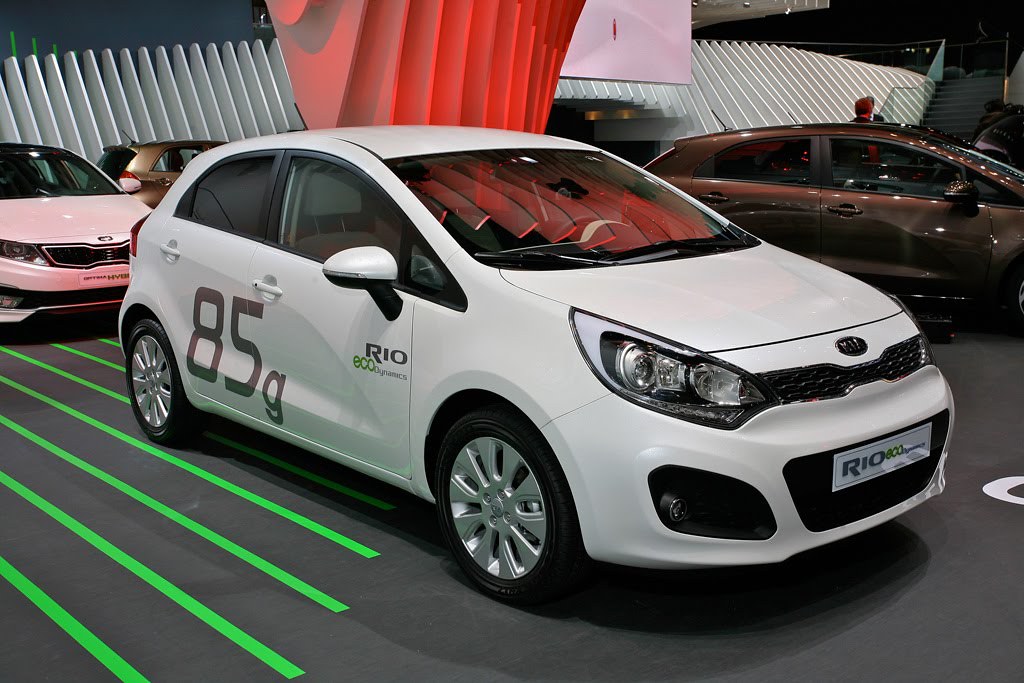
11. **Kia Rio**The Kia Rio is often recognized for its ‘affordability and efficiency,’ making it an attractive option for buyers seeking economical transportation. However, despite these initial draws, many owners of the Kia Rio have unfortunately experienced ‘their fair share of buyer’s remorse.’ The vehicle’s reputation for cost-effectiveness is often matched by its notoriety for significant mechanical and comfort issues that diminish long-term satisfaction.
One of the most widely reported problems with the Kia Rio involves its engine. Owners frequently complain about persistent ‘engine issues,’ including ‘rough idling’ and ‘misfires.’ These performance shortcomings are typically traced back to faults with critical components such as the spark plugs or ignition coils, indicating fundamental reliability challenges within the powertrain. Such engine problems directly impact the vehicle’s dependability and smooth operation.
Beyond the critical engine concerns, the Kia Rio also faces criticism regarding its interior. Owners consistently ‘complain about the cheap interior quality and comfort issues.’ This refers to materials that may not stand up well to wear and tear, and seating that lacks adequate support or adjustability, making even short journeys less enjoyable. The lack of interior refinement and comfort can significantly detract from the daily driving experience, especially compared to rivals in its class.
While the Kia Rio’s low purchase price and respectable fuel economy initially attract buyers, the recurring engine problems, coupled with a subpar interior, often lead to a less-than-satisfactory ownership experience. For many, the long-term frustrations associated with its reliability and comfort issues outweigh the initial financial benefits. Consequently, the Kia Rio frequently proves to be a purchase that owners later regret, underscoring the importance of looking beyond just the sticker price when making a vehicle decision.
Car Model Information: 2019 Kia Rio S
Name: Kia Rio
Caption: Fourth generation Kia Rio
Manufacturer: Kia
Aka: Kia Pride (2005–2017),Kia K2 (China; 2011–2020)
Production: November 1999 – December 2023
ModelYears: 2001–2023 (North America)
BodyStyle: hatchback
Class: Subcompact car
Layout: Front-engine, front-wheel-drive layout
Predecessor: Kia Pride,Kia Avella
Successor: Kia K3 (BL7),Kia Soluto
Categories: 2000s cars, 2010s cars, Articles containing Korean-language text, Articles with short description, CS1 Croatian-language sources (hr)
Summary: The Kia Rio is a subcompact car manufactured by Kia from 1999 to 2023. Body styles have included a three and five-door hatchback and four-door sedan, equipped with inline-four gasoline and diesel engines, and front-wheel drive. The Rio replaced the first generation Pride—a rebadged version of the Ford Festiva—and the Avella, a subcompact sold as a Ford in some markets. A second generation was introduced in 2005 in Europe and in 2006 in North America, sharing its platform with the Hyundai Accent, a subcompact manufactured by its sister Hyundai Motor Company in South Korea. In August 2023, the K3 was introduced as its successor in several markets such as Mexico and the GCC countries.
Get more information about: Kia Rio
Buying a high-performing used car >>>
Brand: Kia Model: Rio
Price: $10,900 Mileage: 70,595 mi.
Read more about: Unraveling the Magic: The Most Unbelievable Plot Holes in Classic Disney Films That Still Bother Us
Making an informed decision when purchasing a new vehicle is paramount, particularly given the significant financial outlay and long-term commitment involved. As our exploration of these vehicles reveals, even seemingly attractive options can quickly become sources of profound regret when reliability, performance, and long-term costs fail to meet expectations. Learning from the experiences of other owners, and carefully scrutinizing detailed reports, provides an invaluable shield against the disappointment that comes from choosing a car that consistently underperforms. By prioritizing proven dependability and transparent analysis, consumers can confidently navigate the complex automotive market, ensuring their investment brings satisfaction rather than prolonged frustration.

